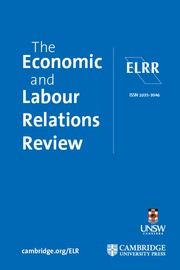Article contents
Why Keynesian Policy was More Successful in the Fifties and Sixties than in the Last Twenty Years
Published online by Cambridge University Press: 01 January 2023
Abstract
In the 1950s and 1960s unemployment averaged about 2 per cent. The lowest level of unemployment in the last twenty years was double that and long term unemployment, virtually unknown in the 1950s and 1960s, has been a severe problem. In each period there were two major slumps. We examine the progress of each slump and macroeconomic policy responses in each case, in order to search for reasons for this contrast. The priority given to minimising unemployment rather than restraining inflation is the most important difference between the two periods. Other major principles stand out, the most important of which are that in response to a downturn a fiscal policy stimulus is essential and must play the major part of any response; and that implementation must be swift and then followed up by further measures if necessary.
Keywords
Information
- Type
- Article
- Information
- Copyright
- Copyright © The Author(s) 2011
References
- 7
- Cited by

